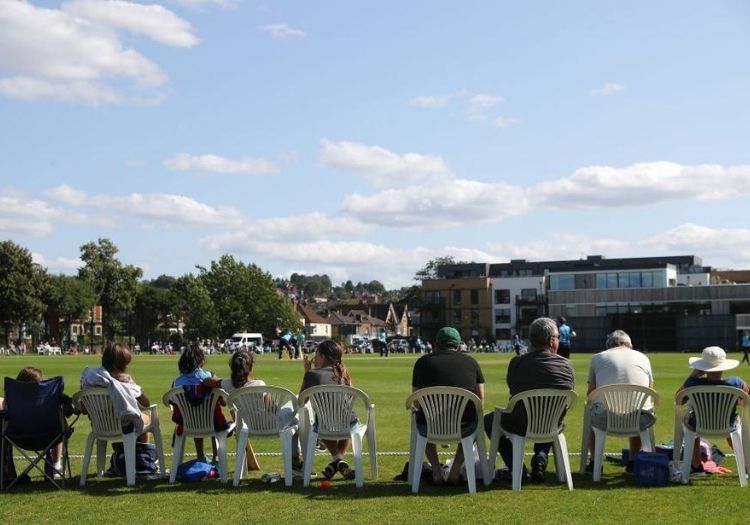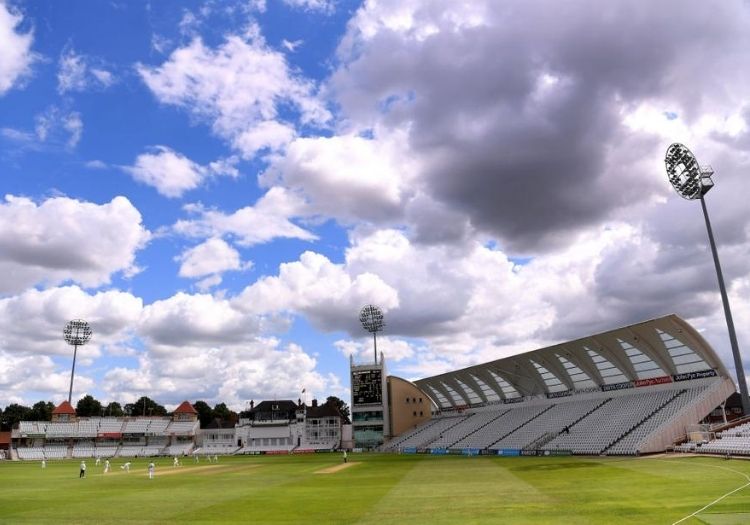PAUL EDWARDS: Panels, committees, CEOs, and presidents might have the overall say, but the first-class game can be shaped by those who care for it most: the paying public

In the week before last Christmas, I went to Trent Bridge to have a chat with Peter Moores and Steven Mullaney. Nottinghamshire had endured a grim 2019 and I was keen to find out how a county that had won five trophies this century was dealing with things. The article that resulted is probably neither here nor there in the current circumstances but one theme of Mullaney’s comments has stayed with me. The Nottinghamshire skipper stressed his determination to reconnect with the people who worked for the club and also with those who supported it. He very much wanted to hear their observations and think about their constructive suggestions. It was a typically brave stance from a skipper whose team had just been relegated.
Over the past few days I have pondered Mullaney’s comments afresh. The piece that appeared here a week ago attracted a slightly unnerving amount of attention but I was encouraged by the passion with which supporters of many counties responded to my thoughts and their pleasure at being seen as guardians of their clubs. What was similarly pleasing was the determination of many members to make their courteous voices heard when their county’s future was being discussed and the resolve of others to join the clubs they supported.
This is all excellent. Decisions are made by the folk that turn up and some chief-executives were once members themselves. People think their voice doesn’t matter but if they never open their mouths, how can they know? There is every need for the helpful engagement practised by so many county members – the redoubtable Annie Chave in Somerset comes to mind – and committees should be reminded of the work done by the foot soldiers who work with little thought of receiving honours or recognition.
Such helpful involvement may be even more significant if the ideas filtering out from the counties about the future structure of the first-class game are translated into formal proposals that meet with the approval of two-thirds of the counties. One of the more popular plans is for what we might call a conference-plus system by which the 18 counties would initially be divided into three groups of six based on their standings in the two divisions at the end of the 2019 season.
Each team would play the others in its conference twice before the high summer is given over to white-ball cricket. In late August and September the top, middle and bottom two teams in each conference would make up fresh six-team divisions and each county would play one game against the four sides it had not so far played that season. The team with the most points would be the county champions but the top two sides in ‘division one’ would also play a five-day final at Lord’s for the Bob Willis Trophy. Phew!
That is the plan outlined and discussed by Mike Atherton in his excellent piece in Thursday’s edition of The Times. Essentially it is the scheme that was explained to me when I met Mark Arthur, Yorkshire’s thoughtful and astute chief-executive, a couple of years ago. It is also, I think, very close to the idea once proposed by Mark Baldwin when he was chairman of the Cricket Writers’ Club. I liked the system then and I like it a lot more now.
Our county system demands respect not abandonment in the wake of coronavirus
The conferences are based on performances rather than geography, the county champions are the side with the most points after 14 games and we would even have a five-day celebration of the county game at Lord’s in late September. At the start of every season, each county would have a chance of winning the title and there would be no need for the expensive policy of signing players on short-term contracts to avoid relegation or achieve promotion. Last week, I said that we shouldn’t abandon the divisional system until we have something better with which to replace it. Now I think we do.
But steady the buffs. It is only a plan and anyone who makes confident predictions more than a few days ahead at the moment is asking to look foolish. (Government ministers seem not to mind doing so.) Nevertheless, should the proposed system be adopted we would have the same amount of first-class cricket, plus one five-day game, and the finishing positions of each county would determine their conference for the following season. There would even be prize money down to 14th place. The one problem it does not solve, however, is that we would not be playing much if any, first-class cricket in the true summer months. Good luck to all young spinners.
Again let me counsel caution. Other schemes are in the air and some of them are distinctly less sympathetic to the 18 counties. There is talk of beginning next year with this season’s Bob Willis groups. That would save money. Likewise, people are thinking of letting the five-day final decide the champions. But this brings us back to the courteous suggestion made at the beginning of this piece.
If you like the conference system – if, at least, you prefer it to the Gravesian cull – tell your chief-executives. Maybe read Atherton’s article if you subscribe to The Times or borrow a copy if you don’t. This is your game, too. Many professional football clubs are run by remote potentates or Russian oligarchs. Your sport is still administered by people who are both accessible and accountable. And very many of them love their cricket quite as much as you do.
There is, though, one small point in Atherton’s article with which I would take slight issue. He writes this: “If having been given a fair crack, the same clubs end up populating division three, year after year, there would be fewer qualms about cutting the number of first-class counties as a result, a Darwinian process having taken its course.”
Well, there might be fewer qualms but I’m not sure the withdrawal of first-class status can ever be justified on results alone. Now let me make it clear that I am not a fundamentalist in this, or any other, matter. If a county club’s coaching system is moribund, if it depends for its survival on cheap, modestly-talented overseas players, if it does not serve its wider community in any recognisable way and if it is constantly in debt, then there may be a case for it ceasing to play four-day or, indeed, one-day, games. I do understand that cricket clubs die.

The Bob Willis Trophy has provided fervent competition - but is it the future?
But the crucial quality possessed by those counties often named when a cull is discussed is that they continue to offer valuable opportunities to young cricketers wishing to have a future in the game. It is not really their fault if they are not rich enough to keep those players when suitors come along or if the cricketers believe that their chances of playing representative cricket will be improved by moving to another county. (I’m not saying there is currently such a bias, but cricketers in say, Somerset or Gloucestershire, have believed one exists for over a century.)
One of the best responses to my piece last week came from a Northamptonshire supporter. It read as follows: “Olly Stone, Jack Brooks, Swann, Monty etc... S**t county!” And the production of England players is only one criterion by which “fitness” should be judged. The club might be a vibrant, purposeful institution and still be going through a tough period. All it could need is time.
And perhaps we should be careful before deciding that a county’s first-class survival depends on its results. In the period 1957 to 1967, one side finished in the bottom three of the County Championship in all but one of those 11 seasons. That was Nottinghamshire.
And what about the county that finished in one of the bottom four places in seven of the 11 years from 1976 to 1986 and never finished higher than 12th in that time? A single limited-overs trophy could hardly be cited as justification for preserving its first-class status. A candidate for the chop, then? Thankfully not. The county’s name? Lancashire.
For unrivalled coverage of the county season, subscribe to The Cricketer and receive four issues for £15